 |
Radiomarelli RD65 Ual Ual
Italy - 1937 |
 |
|
|
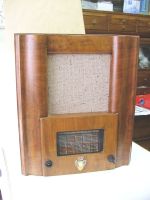 |
Italiano |
|
|
|
|||
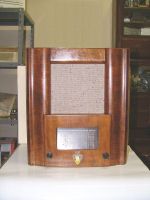 |
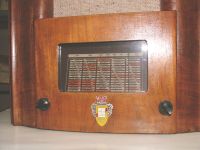 |
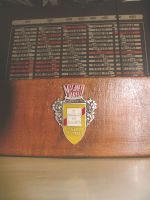 |
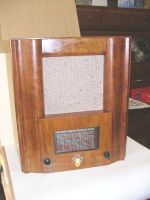 |
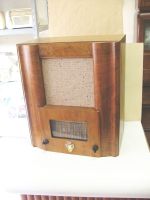 |
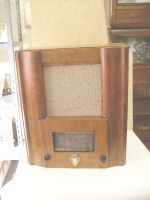 |
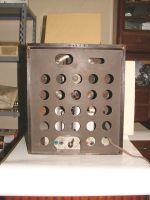 |
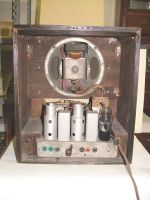 |
|
Il nome Ual Ual della RD65 era stato ispirato da una delle località teatro di vittorie italiane conseguite durante la guerra d'Etiopia. Il circuito della RD65 era del tipo supereterodina - reflex, con ricezione della gamma delle Onde Medie (da 200 a 575 m.) e con la media frequenza che risuonava a 450 KHz. Per la ricezione la radio doveva essere collegata a un'antenna esterna. La radio utilizzava quattro valvole della FIVRE: una 6A8 come convertitrice, una 6B8 nello stadio a Frequenza Intermedia e rivelazione, la 6L6 come amplificatrice di potenza audio e la 80 come raddrizzatrice. La 6L6, un tetrodo a fascio di grossa potenza, nel 1937 era un tipo nuovo appena entrato in produzione e nella pubblicità della Ual Ual ne venivano esaltate le prestazioni come amplificatore audio. L'alimentazione della Ual Ual avveniva tramite rete e con il cambio tensione si potevano selezionare: 110-125-135-160-190-220 Vac. Il mobile era rettangolare in legno a sviluppo verticale con scala parlante in vetro, i controlli di sintonia e del volume-accensione erano posti in basso, l'altoparlante era del tipo elettrodinamico con il diametro di 21 cm. Le dimensioni della radio erano 34 x 39 x 22 cm. Nel 1937 la Ual Ual veniva venduta in Italia a 786 lire (circa 913 Euro attuali) se pagata in contanti oppure si poteva avere pagando 80 Lire alla consegna più 18 rate mensili di 45 Lire cadauna. © IK3HIA, 2005. |
|||
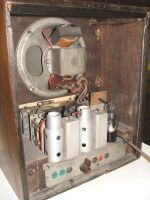 |
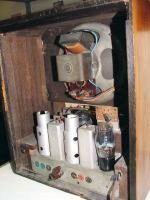 |
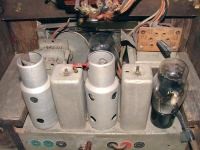 |
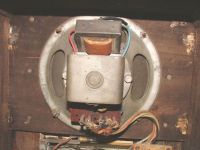 |
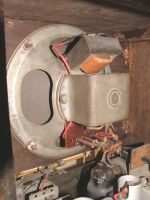 |
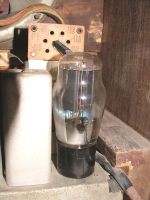 |
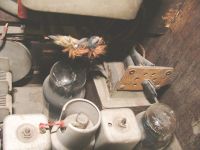 |
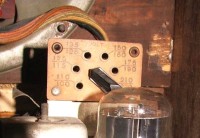 |
|
The name Ual Ual of the RD65 was inspired by one of the locations where Italian victories were achieved during the Ethiopian war. The RD65 circuit was of the superheterodyne - reflex type, with reception of the Medium Wave range (from 200 to 575 m.) and with the intermediate frequency resonating at 450 KHz. For reception the radio had to be connected to an external antenna. The radio used four FIVRE valves: a 6A8 as a converter, a 6B8 in the Intermediate Frequency and detection stage, the 6L6 as audio power amplifier and the 80 as a rectifier. The 6L6, a high-power beam tetrode, had just entered production in 1937 it was a new type of tube and its performance as a strong audio amplifier was exalted in the Ual Ual advertising. The Ual Ual was powered by the network and with the voltage change it was possible to select: 110-125-135-160-190-220 Vac. The cabinet was rectangular in wood with a vertical development and a glass dial scale, the tuning and volume-on controls were placed at the bottom, the speaker was an electrodynamic type with a diameter of 8.3 inches. The dimensions of the radio were 13.6 x 15.4 x 8.7 inches. In 1937 the Ual Ual was sold in Italy for 786 lire (about 913 Euros today) if paid in cash or it could be had by paying 80 lire on delivery plus 18 monthly installments of 45 lire each. © IK3HIA, 2005. |
|||
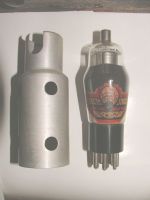 |
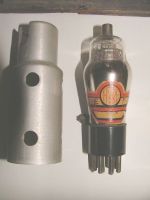 |
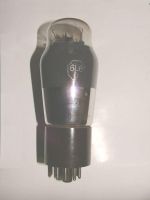 |
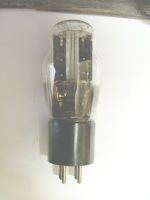 |
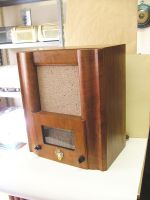 |
 |
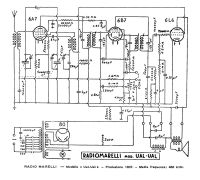 |
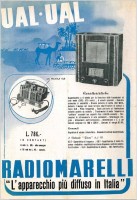 |
|
Back to the top of the page |
|||
| Return to: ik3hia home page |
|
Return to: Old Radio |